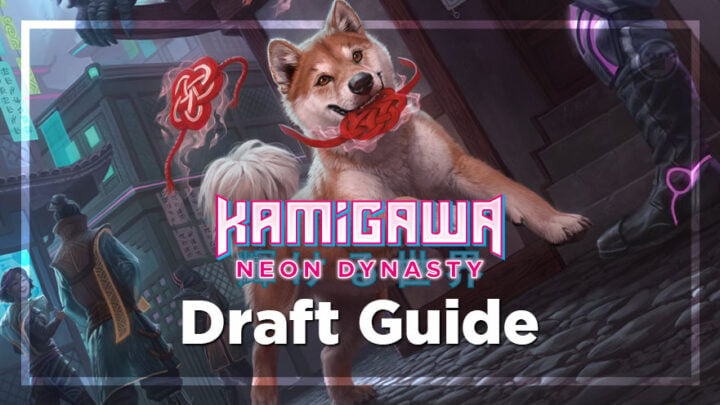Heed my word, Magic players: the future is now! Kamigawa: Neon Dynasty has launched to much fanfare and applause, with its daring cyberpunk setting drawing many curious players back into the game after the holiday lull.
Just glancing over the spoiler for Neon Dynasty gives you the feel of something different and special, with a remarkably high density of artifacts and enchantments. It also breaks the previous record for density of text, with more words of rules per card than any set in history!
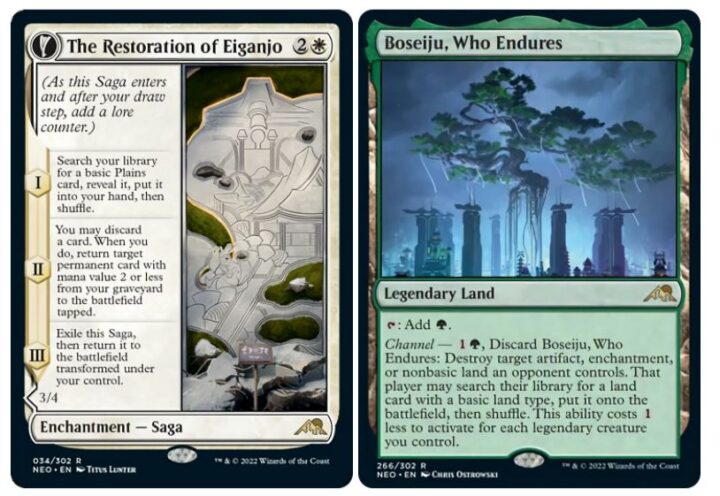
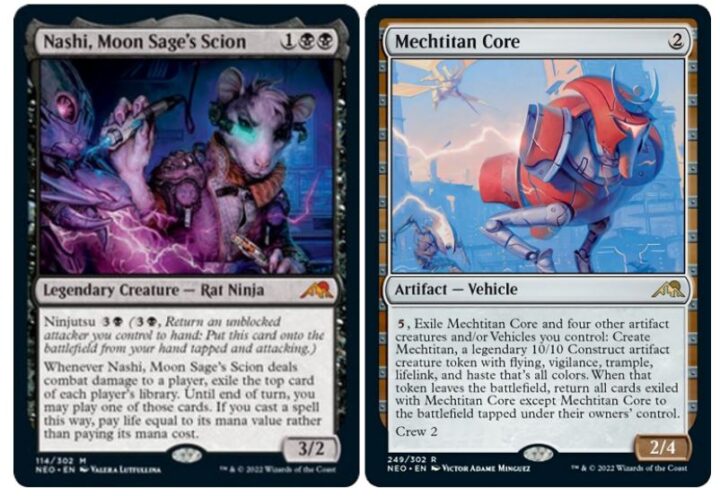
Luckily, that word count doesn’t translate to in-game complexity; commons and uncommons utilize familiar abilities, and the Draft format is focused on the fundamentals of combat. When playing to research this guide, I was able to pick up the format faster than any set in the last 12 months! There’s just a few key rules you need to remember for Neon Dynasty Limited – which I can hopefully drum into you with this Before-You-Draft guide!
SETTING A KILLER PACE
A good place to start analyzing any Draft format is the common and uncommon removal options, since those dictate how most other cards will be valued. Removal in Kamigawa: Neon Dynasty is limited compared to most sets, particularly when it comes to instant-speed options or those that deal with larger creatures. This opens up combat tricks and big bodies as crucial weapons in the set, a conclusion which holds true through all my experience so far. The only buff to removal is the high number of artifact and enchantment creatures, which makes Disenchant effects maindeckable.
Thanks to the mediocre interaction and great aggro mechanics like ninjutsu and Vehicles, Neon Dynasty is a set defined by aggression. That’s not to say that every deck you draft has to be red aggro (although those decks are very good!), but more that any slower deck needs to plan for an onslaught of cheap, powerful creatures backed up by direct damage.
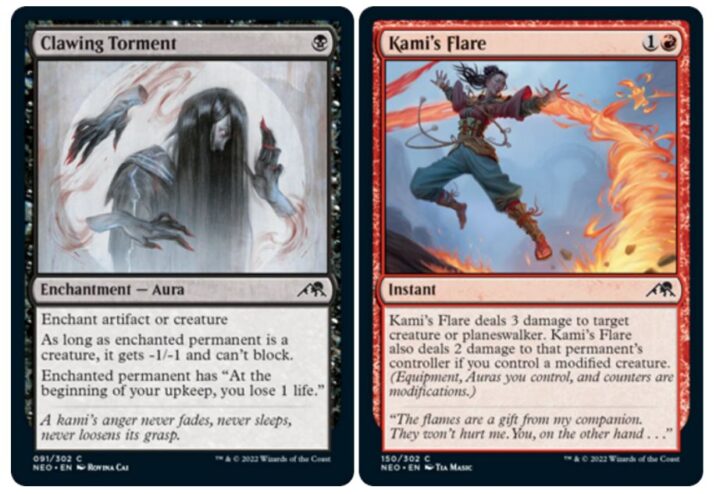
We haven’t had a set with this much “reach” for aggro decks in quite some time, and it can make for some extremely tense late games, even when you’ve managed to stem the tide of attackers. Lifegain and lifelink of any kind becomes crucial to winning most of your games, as is a core of powerful early creatures – not slow-impact Sagas or 1/1 bodies, but ones which will actually trade with potential attackers or force removal. Driving home their importance is the single best thing I can do to improve your Neon Dynasty win rate.
SUBTLE COLORS, BLURRED LINES
For years now, almost every Draft format has been analyzed starting with its intended two-color archetypes. Even when we’re not on Ravnica or Strixhaven, the color pairs are each assigned strong mechanical identities, most visibly through their multicolor “signpost uncommon.”
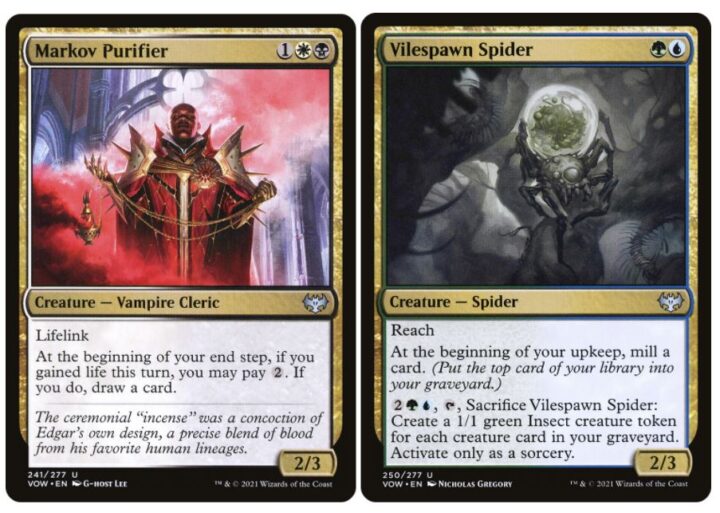
But not so much this time! Kamigawa: Neon Dynasty may have a cycle of gold uncommons, but for the most part, they are simply powerful, self-contained cards. Your color choices are still important, but they are no longer a neat shorthand for how your deck should be played and drafted.

Instead, the two defining traits of your deck are how fast and aggressive it is, and which lines of synergy you’re leveraging. The most prolific synergy archetypes in Neon Dynasty are artifacts, enchantments, modification, and one I’ll call “Ninjas and friends.”
Unlike the average Draft set, where your archetype’s build-around mechanic might only appear on a few spells, these broad themes are constant across all colors. Each of them can be used to build a slower value-oriented deck, or a fast-paced aggressive one. They all have ways to naturally combine well, and you can potentially have all of them overlap in the same draft – though the most successful decks will heavily focus on one or two. With good fixing plentiful in this set, it’s usually more important to be consistent in your game plan than your colors as you move through the draft.
ARTIFACTS
Artifacts are the largest and most omnipresent theme in the set, and it’s rare to have a Neon Dynasty draft deck without at least a few. But every color except green has cards which actually care about or reward you for playing artifacts, and if you can snag a few early in the draft, you can start prioritizing all the generic artifact cards more highly.

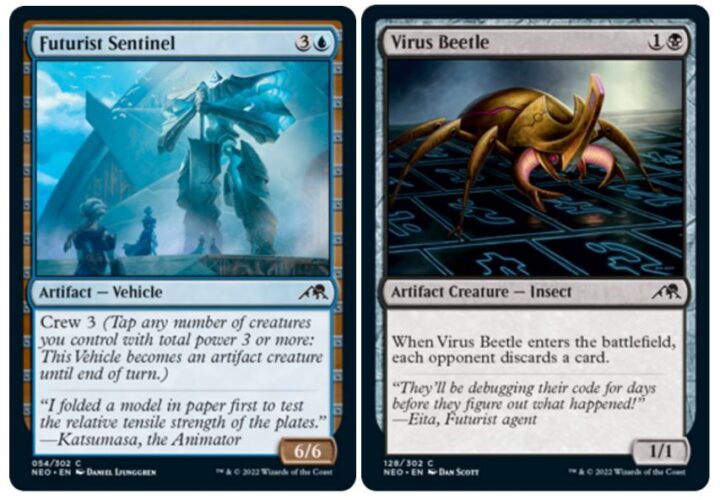
Fast-paced artifact decks utilize Vehicles, Equipment, and triggers that tack on free damage in or out of combat.
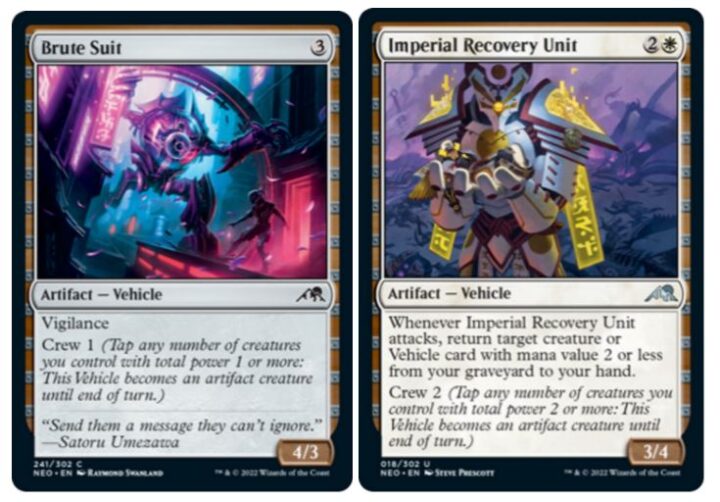
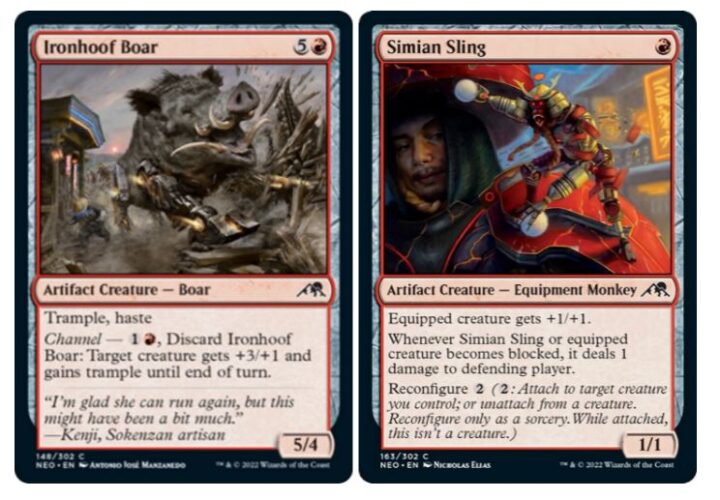
Slow-paced artifact decks clog the board with artifact tokens and tough flyers, then generate compounding value with activated abilities or by copying, sacrificing and recurring artifacts.

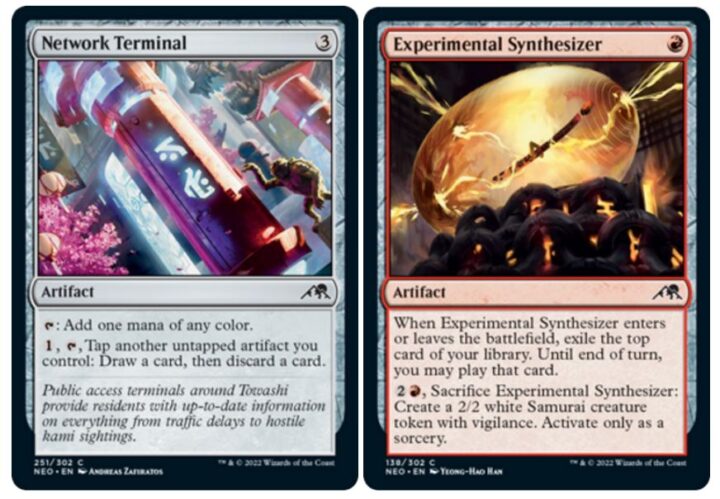
ENCHANTMENTS
Enchantments are also plentiful across all colors, although white and green have significantly more emphasis on the theme. Red offers no specific enchantment synergies but has the best aggressive cards, followed by black, green, white and blue.
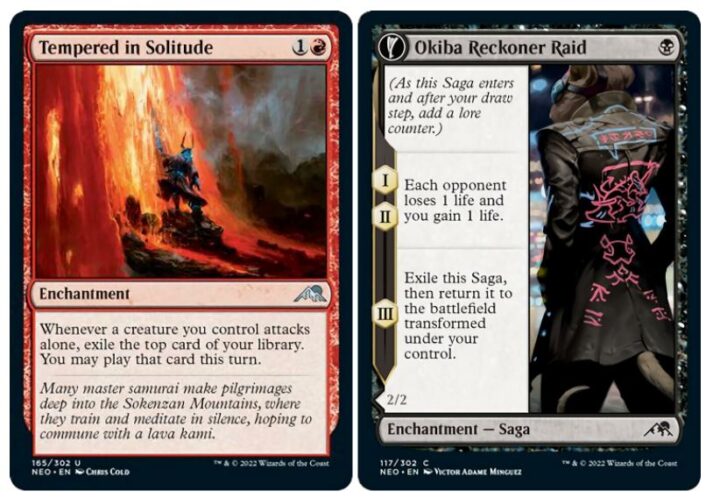
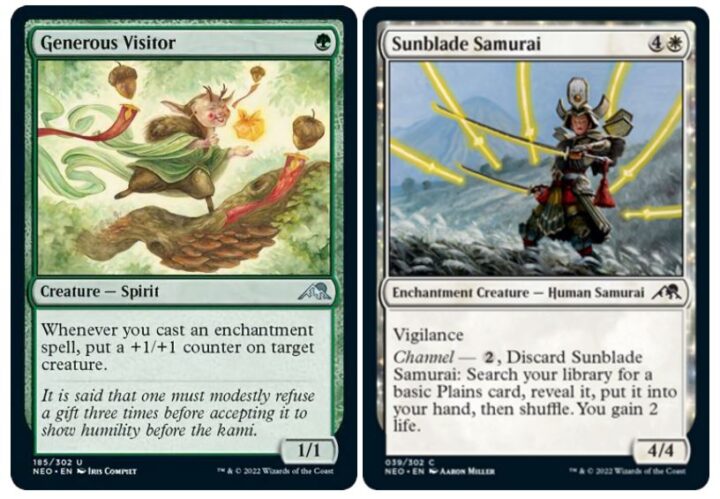
Fast-paced enchantment decks curve out with one-drop Sagas and cheap enchantment creatures to set up an early tempo lead, keeping blockers off the board with enchantment-based removal and draining away the last few life points directly.


Slower enchantment decks stall until their four- and five-mana uncommon Sagas can take over the game. Enchantment-based ramp can give you mana to accelerate into them early, or to loop them repeatedly with self-bounce and graveyard recursion.
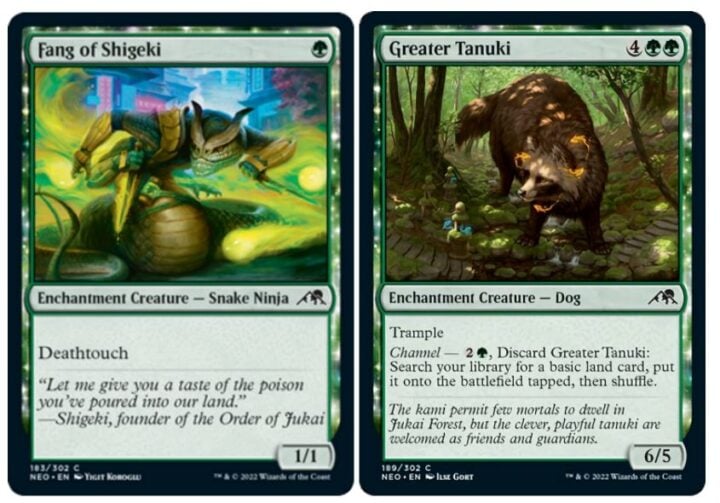
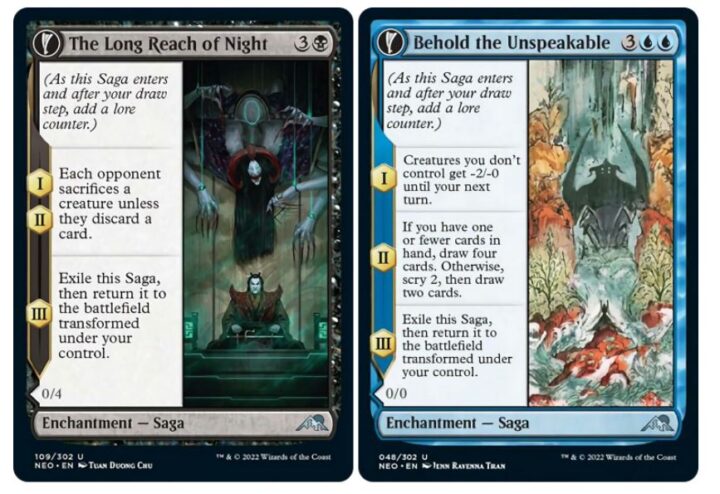
There is also a whole subset of cards which care about both artifacts and enchantments, or which specifically reward you for playing both. These are very easily triggered due to the sheer density of each type, and are almost all good!
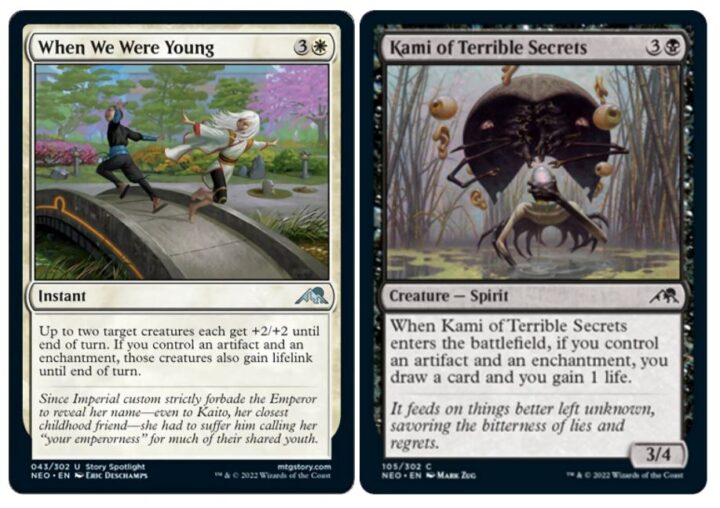
NINJAS (AND FRIENDS)
As I implied above, drafting this theme means more than just forcing Ninja creature cards, unless you’re extremely lucky and have an open lane in UB. For one, their synergy cards work for Rogue creatures as well, increasing your range of options significantly. And while the Ninjas in Neon Dynasty are all quite good, the most valuable thing they offer is the ability to return powerful ETB and Saga effects to your hand for timely reuse.
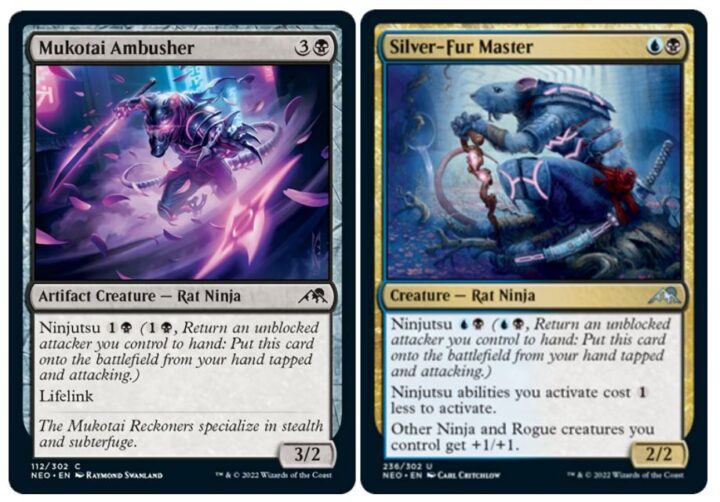
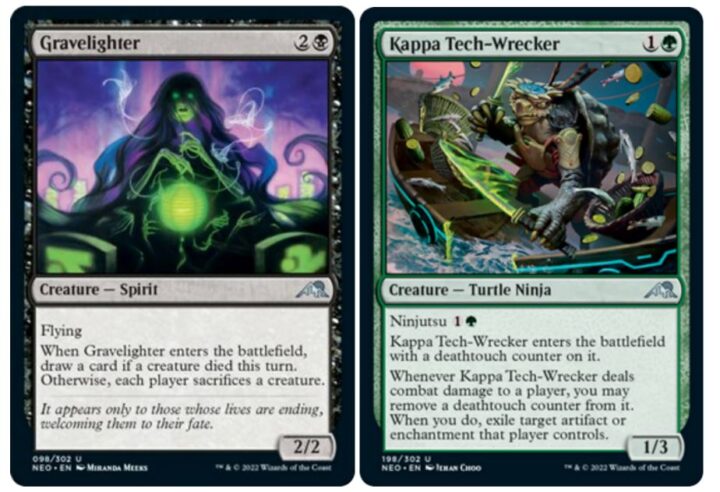
Fast Ninja decks play cheap and evasive attackers and cards which synergize with them – Equipment, Auras and powerful Ninjas to swap in for them mid-combat. They rely on efficient interaction to disable potential blockers.
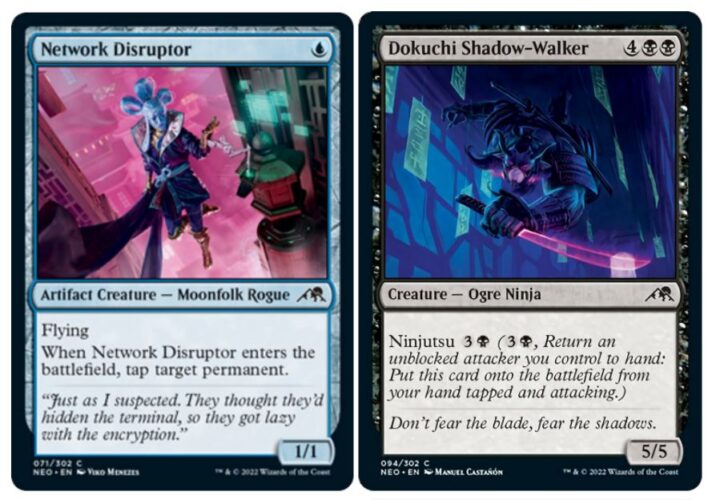
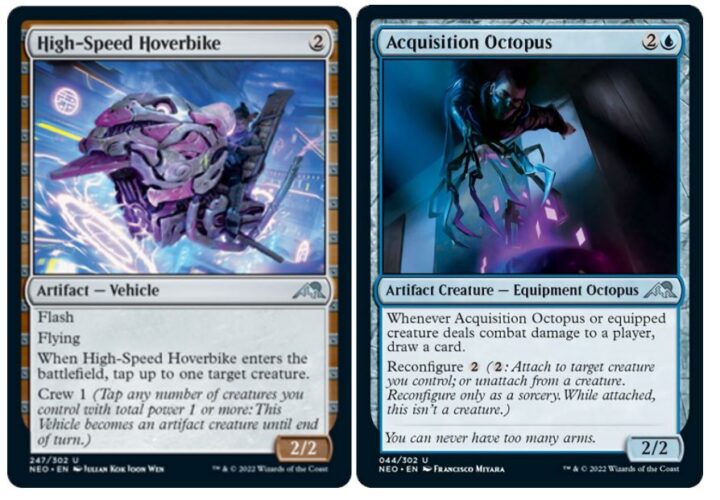
Controlling Ninja decks use ninjutsu more as a value engine, abusing tricks like “double ninjutsu” (where you can replace one Ninja with another repeatedly in the same attack for extra triggers) or using them to loop Sagas or other value triggers.
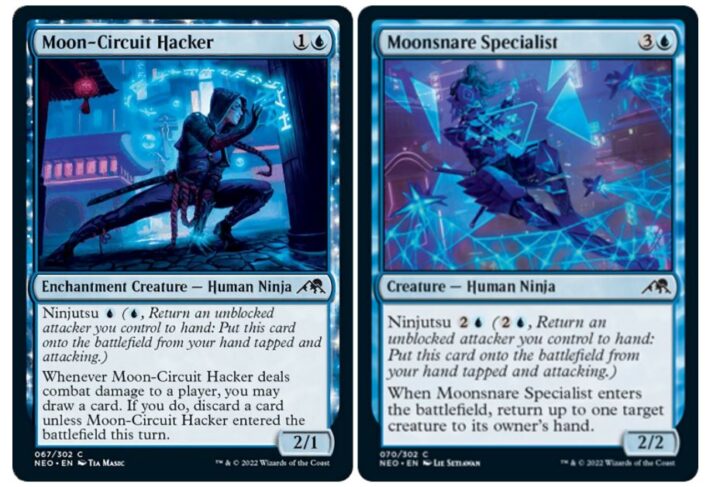

Such decks can blend Ninja themes with artifact or enchantment ones – not to mention many Ninjas are themselves artifacts or enchantments.
MODIFICATION
This theme has the fewest build-around cards, with the majority landing in red. Of course, the theme is already its own reward, paying you off for making your creatures larger and more deadly with Equipment, Auras, and counters. Counters are the most numerous and easy-to-distribute kind of modification, and those are mostly in green.
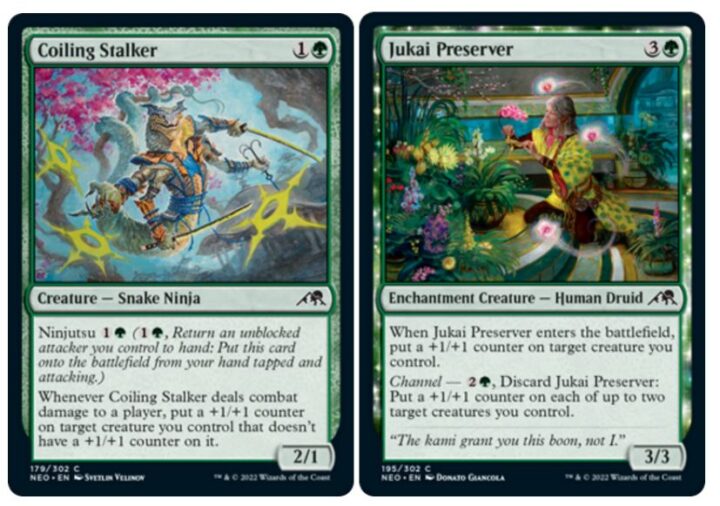
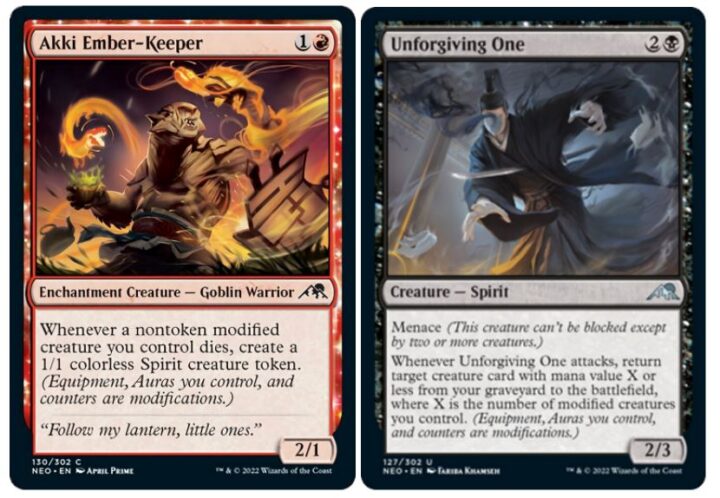
Red-green is therefore the goal for fast-paced modification aggro, using efficient buffs to scale your early attackers above whatever blockers can be mustered at the time. Red-black is also good for the sheer volume of removal it can bring to the table.
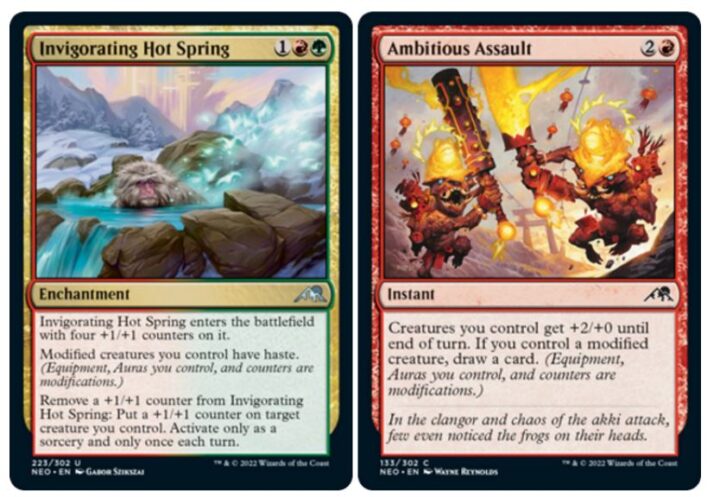
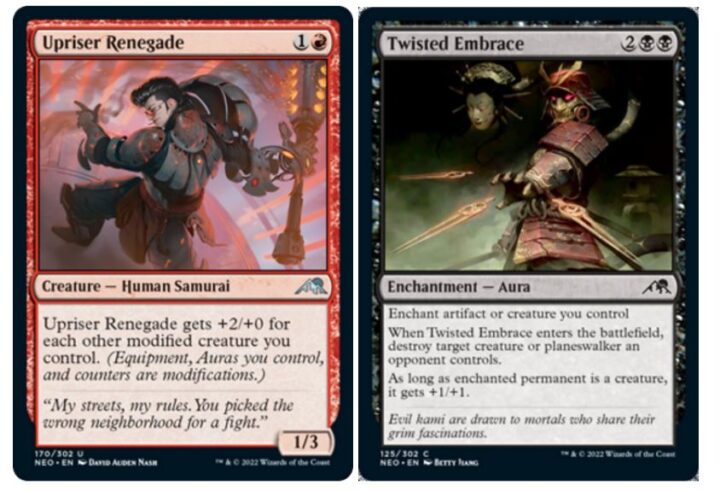
Slower modification decks utilize reusable or scaling buffs (like Equipment) to force repeated bad trades in combat, and rely on mana sinks like Bearer of Memory or the Go-Shintai Shrine creatures.
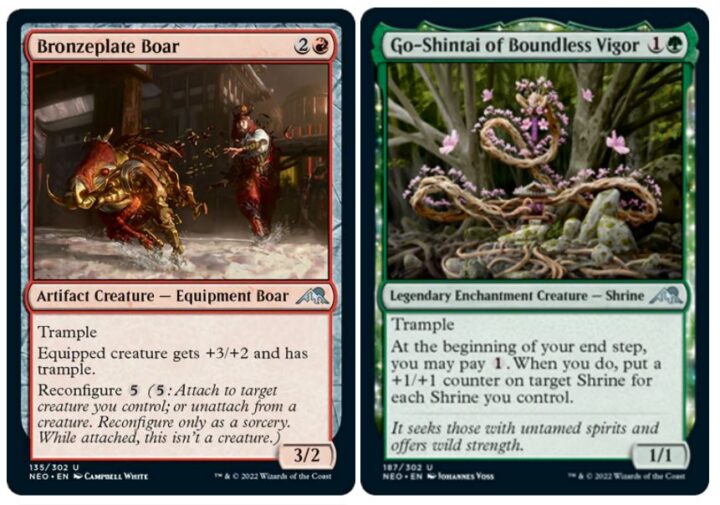

Since this is the loosest and most combat-oriented archetype, you can prioritize picking the best aggressive creatures or try to incorporate a secondary theme. Just make sure you combine the fast parts of each strategy, so your picks aren’t working at cross purposes.
THE FIFTH ELEMENT?
Of course, this list doesn’t cover every mechanic in Neon Dynasty: there’s some reanimation, Samurai-and-Warrior tribal exalted, land ramp, Vehicles, and so on. But compared to the main four, the themes are all notably limited, both in the number of relevant cards and color representation among them. If you find yourself pulling down the RW signpost uncommon in pack one, for instance, you might be able to happily assemble a ton of Samurai and start attacking one at a time for value. But that draft mostly steers itself and I wanted to focus on the more free-wheeling kind you’ll be dealing with most often.
You can also potentially draft a solid Neon Dynasty deck without really committing to any of these synergies. Simply taking a ton of removal and some solid late game spells can be a winning path for Abzan colors especially, or if you have the bombs and fixing to run 5c goodstuff.
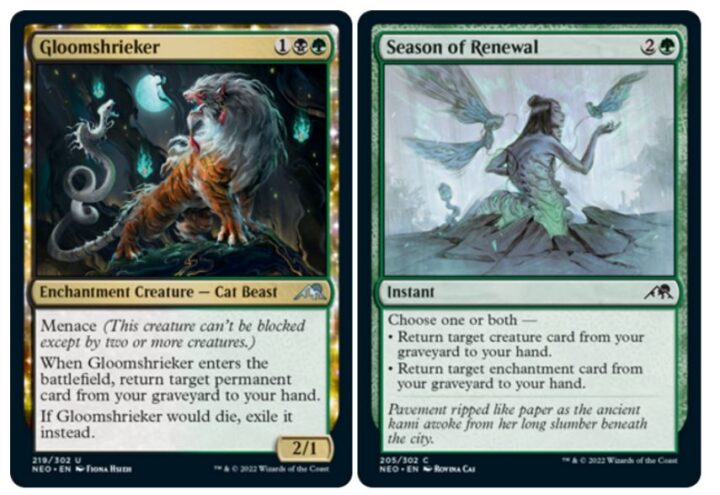

I’d normally list the most important commons and uncommons for each color before I go, but the card quality for such cards in Neon Dynasty is high enough that it doesn’t hold the same weight as usual. If you take the cards pictured in this article, you’ll have most of the list down, anyway. But, if you’re still hankering for some more detail-oriented advice, check out next week’s companion piece: Neon Dynasty Draft By Numbers!

Tom’s fate was sealed in 7th grade when his friend lent him a pile of commons to play Magic. He quickly picked up Boros and Orzhov decks in Ravnica block and has remained a staunch white magician ever since. A fan of all Constructed formats, he enjoys studying the history of the tournament meta. He specializes in midrange decks, especially Death & Taxes and Martyr Proc. One day, he swears he will win an MCQ with Evershrike. Ask him how at @AWanderingBard, or watch him stream Magic at twitch.tv/TheWanderingBard.

